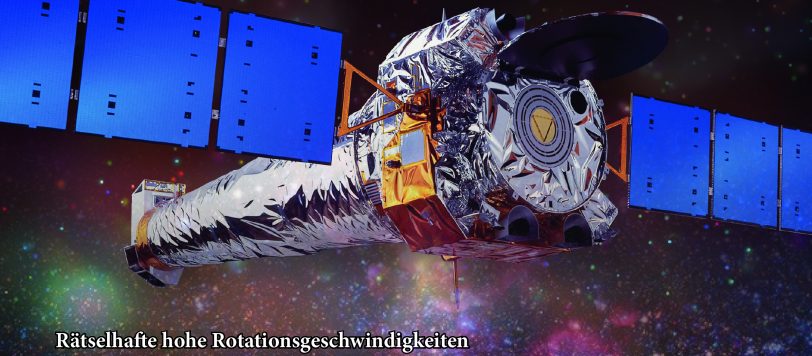Categories: Astrophysik
Tags: Dunkle Materie Joachim Schmitz Masse der Milchstraße Mathematische Reise Plasmawolke
versendet von: Klaus Retzlaff
Kommentare:0
Riesige Plasmawolken umhüllen unsere Milchstraße

Der Buchautor, Joachim Schmitz, stellte der Astronomischen Gesellschaft Magdeburg e.V. den folgen Gastbeitrag zur Verfügung – herzlichen Dank:
Im Weltraum stationierte Röntgen-Teleskope machen riesige Plasmawolken sichtbar, die die Milchstraße umhüllen. Die ionisierten Gase addieren sich in dem galaktischen Volumen zu einer gewaltigen Masse, die aufgrund ihrer geringen Dichte nahezu transparent ist.
Auf Basis der Weltraum-Daten hat eine amerikansiche Studie die Plasmawolken
in diesem kosmischen Raum untersucht. Davon unabhängig hat eine Heidelberger Studie des Max-Planck-Instituts die Rotations-Geschwindigkeit von Sternen in dieser Raumsphäre vermessen. Das vorliegende Themenheft erläutert anhand der beiden Studien die Zusammenhänge von Plasmawolken, Rotations-Geschwindigkeit und Gravitation.
Die Studien offenbaren ein riesiges Potential an Materie welches die Dunkle Materie „engl. missing mass“ ersetzen kann. Im Ergebnis bedeutet dies, dass für die Stabilität der Galaxis keine Dunkle Materie erforderlich wäre.
Bild: Titelseite Themenheft “Riesige Plamawolke aus supetheißen Gasen umhüllen unsere Milchstraße”,
Title: Huge plasma clouds envelop our Milky Way
The author made the following guest contribution available to the Astronomische Gesellschaft Magdeburg e.V. – many thanks:
Space-based X-ray telescopes make huge plasma clouds visible that surround the Milky Way galaxy. The ionized gases add up in the galactic volume to a big mass that is nearly transparent due to its low density.
Based on the space data, an American study has the plasma clouds
examined in this cosmic space. Irrespective of this, a Heidelberg study by the Max Planck Institute has measured the rotational speed of stars in this spatial sphere. Based on the two studies, this issue explains the relationships between plasma clouds, rotational velocity and gravitation.
The studies reveal a huge amount of matter which dark matter “engl. missing mass “can replace. As a result, this means that dark matter is not required for the stability of the galaxy.
images: Titelseite Special Issue “Huge plum cloud of supersidious gases envelop our Milky Way” (c) Joachim Schmitz, with kind approval





